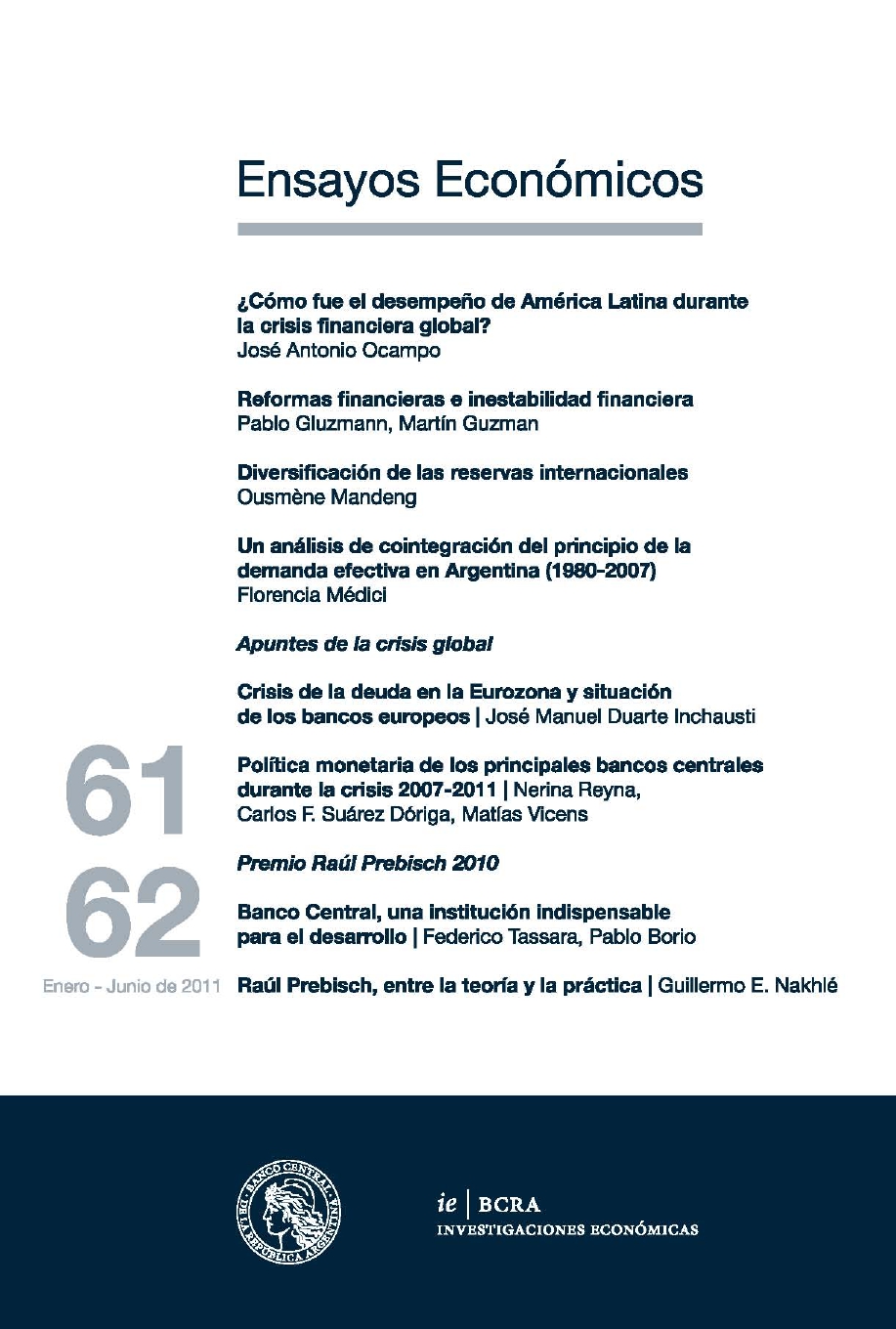Financial Reforms and Financial Instability
Keywords:
Banking Crises, Financial Liberalization, Financial ReformsAbstract
In this paper we analyze empirically the relationship between different financial reforms and financial instability. We also analyze the relationship between financial liberalization and financial instability, where financial liberalization is measure as an aggregate of different financial reforms. Using data from Laeven and Valencia (2008) on banking crises and from Abiad et al.(2010) on financial reforms, we find a positive relationship between financial liberalization and frequency of banking crises. This relationship remains robust to different specifications of the regression model. Furthermore, we find that the effects of financial liberalization on financial instability are different in the short-run and in the long-run. The increase in financial instability that comes after financial reforms is mainly concentrated in the window of five years after the reforms. If a banking crisis does not occur during those five years, the probability of having a banking crisis later on becomes negligible. Finally, we find that the contribution of every reform to financial instability differs. While every reform increases the probability of a banking crisis, the effect is higher for stock market reforms and for the removal of barriers to entry to the banking system.
JEL classification: E44 ; F36 ; G01 ; G15




